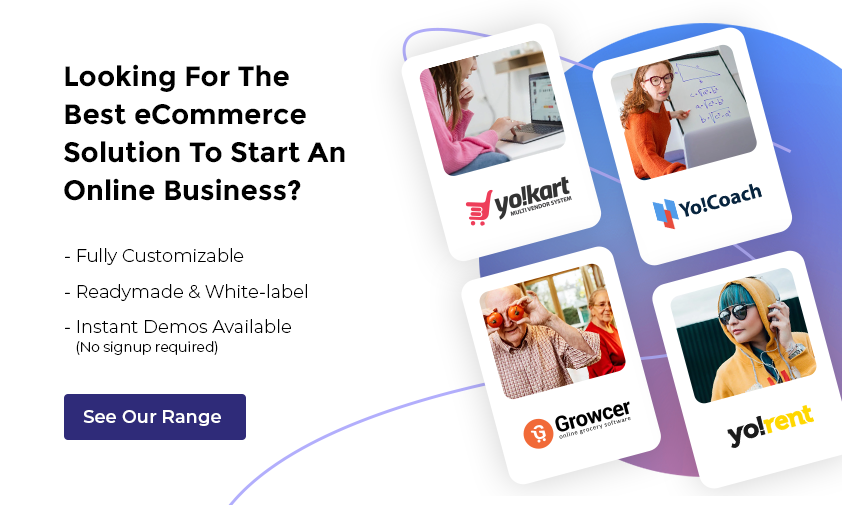Last Updated: 3rd May, 2023
Many new business models have taken shape in the past decade, specifically after the advent of eCommerce platforms like Magento, Shopify and YoKart that helped startups launch easily and faster.
Presently we have plentiful options including proprietorship, partnership and LLPs (limited liability partnership) for launching a new business. However, the one with an easy and proven business model is the most promising. Here, we are talking about the Asset-Light business model that requires low investment to set up and yet is capable of providing high-returns.
The idea of asset-light business model emerged a few years ago to keep the capital assets less in comparison to the operations. As a result, the owner witnesses high profit margins with no devastating loss figures.
Table of Contents:
How does the Asset-Light Model work exactly?
The concept of the asset-light business model is slightly different from all traditional business models where the owner is obliged to own the products and services he/she provides.
Suppose a person wants to start a cab sharing business but is low on funds to invest, Instead of applying for a bank loan to purchase cabs, they can directly incentivize cab owners for conducting the business operations with their cabs. Usually, the incentive is the higher-percentage of the profit margin earned per booking or sale.
The asset-light business model is also known as the capital-light business model, as it doesn’t require a lot of money to put a venture into action.
Be it manpower, residential or commercial spaces, electronic goods, or automobile equipment; instead of spending a large sum of money to own all of it, you pay a certain amount of capital to get things done and share the profit.
That Sounds a lot like Shared Economy, right?
Of course, it does. And that’s because the shared economy is the backbone of the asset-light business model. The success of a venture is measured in terms of returns generated in comparison to investment. In a shared economy, the capital resources are divided amongst various entities of the business, ensuring low but collective investment that brings generous returns. This is why the shared economy has become a hot trend and is expected to stay that way for many years to come.
Some Successful eCommerce Ventures That Thrive On The Asset Light Business Model
1. Uber
Uber is probably the most popular example of a business running on an asset-light model. It is a cab booking platform that brings cab drivers and passengers together, taking a percentage from the revenue generated from rides. The company owns the platform, but it neither owns the cabs nor the drivers.
2. Airbnb
Airbnb lets you book accommodation through their app as well as website. It offers the convenience to pay according to your comfort for the time chosen to stay. In the end, Airbnb gets a certain percentage of the amount of the rent as its share. The Airbnb platform thus, with all its users, buyers, sellers, and travellers, constitutes a marketplace.
Airbnb wouldn’t have been such a success in such a short time, had they planned on building or buying hotels. It is tying up with relevant parties and it sustains on the revenue generated.
3. Spinlister
Spinlister is an American peer-to-peer bike-rental platform where anybody can rent a bike for certain days. Renting bikes is not as risky as renting expensive items like automobiles and furniture, and thus, also requires a low insurance cover to attract renters.
Yo!Rent helps to start a bike rental business on similar lines.
4. Instacart
Instacart is a quick alternative to traditional grocery shopping that allows people to shop for daily necessities right from their smartphone. The best part about Instacart is that it ensures same-day delivery and features stores and malls city-wide. Along with delivery, the option to pick-up groceries is also available on Instacart. It’s membership plan provides greater benefits to customers by exempting delivery fees and reducing delivery time to one-hour.
Instacart is a multi-vendor platform that operates with the help of local vendors. Instacart like business models can be easily set up or built on marketplace softwares like Yo!Kart.
5. RVshare
If you remember luxurious motorhomes and caravans from movies, you will be able to relate with the term RV. Some of you also must have had the experience of travelling in one. If you need a ride full of nostalgia or are just planning a long adventurous road trip with your family, then renting an RV (recreational vehicle) is quite an exciting option.
RVShare is America’s largest RV booking platform that allows you to list/rent RVs at handsome rates. It also provides RV owners an insurance cover of up to $1 million and mainly earns through rental commission.
6. Getaround
Getaround is an asset-light P2P car sharing marketplace that lets people rent and borrow cars from other people. The company taps into an extensive car base of locally owned vehicles . If a car owner is going out of town, he can rent it out via Getaround, who has set various policies to ensure that the car returns in good condition.
In such a marketplace, the company need not own or renew any cars, nor do they face any parking, logistics or scaling issues. Also , an active inspection of the car owners, who are the suppliers on the marketplace, helps renters trust the company.
With million-dollar insurance from Berkshire Hathaway, Getaround turns out to be a safe bet for car lenders and borrowers alike.
7. DoorDash
Another great example of an asset-light business model is DoorDash. It invests only in the operations infrastructure and delivery vehicles. Everything that is bought from DoorDash is procured from various restaurants in the company’s operational areas. DoorDash charges commissions from the restaurants on every order. In return, it gives them a wide reach and allows customers to buy food from their preferred restaurant.
For building a website like DoorDash, Yo!Yumm is a feature-loaded fully-customizable solution that comes with different modules for owner, restaurants, and delivery staff.
8. Verbling
Verbling connects language tutors with learners on its platform. Individual tutors (who are basically the native speakers of a language) earn by teaching language learners. From French, German, Spanish and Italian to Japanese, one can learn any language on Verbling. Unlike its competitors, Verbling doesn’t need to spend money and time in creating its own language courses.
To create a website similar to Verbling, Yo!Coach is your best pick., A fully-customizable eLearning solution, helps launch your platform, ready for onboarding teachers almost instantly.
9. Rent the Runway
RentTheRunway partners with designers, for renting out clothes and accessories. Additionally, designers are provided with data on trending designs, fabrics, colors, fitting, and consumer demands.
RentTheRunway’s own website runs on a simple business model and features new designers and special collections.
Pros and Cons of Asset-Light Businesses
For any business, there are positives that propel as well as negatives that tend to slow it down. The following pros and cons of asset-light businesses play a prominent role in their success:
Pros
Highly Scalable: The primary advantage of an asset-light business model is its scalability. Given the fact that the investment made on the startup and operations is less in comparison to the profit harvested.
Simplified Business Expansion: Growth proportion and prospects are higher in the case of an asset-light business model. As more partners keep adding to the network, and starting service in a new location is as easy as a click of a button, business expansion is not difficult.
Cons
Over-reliant on Vendors: There is also a downside to an asset-light business model. As it is heavily dependent on third-party vendors and peers, any fluctuation in their numbers also affects the business. This makes it necessary to find additional revenue channels.
FATbit’s Various eCommerce Marketplace Platforms
“Technology will always evolve; that’s the way it is, and that’s how it should be. Asset light business model thrives on technology, and so should you.”
Launching your own asset-light business in your preferred industry with FATbit’s various eCommerce marketplace platforms, such as:
Use the versatile Yo!Kart and start your own eCommerce marketplace like Amazon or Alibaba in the e-retail industry. Offer physical and/or digital products on the platform. Likewise, with Yo!Kart B2B, you can launch a marketplace for B2B users
Yo!Rent is a completely customizable marketplace system that helps you build an asset-light online rental marketplace with unique features that yield increased profits.
Yo!Yumm makes it easy to build a marketplace like DoorDash & Grubhub, where users can search for restaurants and order food from their phones at their desired time.
VivoCabs helps you start an asset-light taxi booking venture exactly like Uber, but in fewer steps and with an exceptional user experience.
Yo!Care is a readymade solution designed for building care services marketplace like DogVacay or for offering other care services such as senior care.
Using Yo!Gigs, you can launch a service seeking marketplace for professionals, which is quick to setup and easy to scale and monetize.
FunAway makes it easy to establish an adventure travel activities booking services business.
PaperWeight lets you build an asset-light model-based marketplace for freelance writers.
With Yo!Meals, you can quickly establish an online meals & recipe (meal-kit) ordering & delivery business.
Ready To Kickstart Your Online Business?
Conclusion
Every business model has its own set of advantages and disadvantages, and it is important for all aspiring entrepreneurs to make sure they take each one into account before starting a venture. The same is the case with an asset-light business models.
A reason behind its success is that along with the business owner, it also benefits the actual owner of the services and products who do their best to survive and thrive the business. Keeping the high-profit margins and increasing demand for asset-light business models in mind, we can conclude that its flaws are workable to extract the benefit.
FAQs
Q1: What are the benefits of asset light business models?
Opting for an asset-light model has many businesses. For a quick view, you can check the list below:
- Low investment business models
- No need to own and maintain inventory
- No shipping and delivery hassles
- Only require software technology
- Are highly scalable as product catalog can be very vast
Apart from this, the benefits may vary depending on the type of business you want to start. For example, an asset-light car rental marketplace may have completely different benefits than an electronics marketplace.
Q2: How to choose the right asset light business model?
For selecting the right asset-light business model, we recommend conducting a thorough market research and developing an MVP. The MVP will help you find the market-fit product, on the basis of which you can decide your vendors. An example of this approach is AirBnb, whose founders first tested the P2P idea to lend spare rooms at cost effective pricing in a conference. When they received a positive response, they finally launched their platform in the market.
Another approach to select the right asset-light business model is to capitalize on an already selling service or product. With this route, you may have to compete with already existing players but can save time and resources on MVP development. For example, you can launch a cab booking business in a city where the competition is low and not able to meet the rising consumer demand. For this, you may not need to test your business idea and can launch a cab booking platform directly.




Comments (6)
 manjot singh
manjot singh
 FATbit Chef Post author
FATbit Chef Post author
 We Factor
We Factor
 FATbit Chef Post author
FATbit Chef Post author
 Jerome Sykes
Jerome Sykes
 FATbit Chef Post author
FATbit Chef Post author
you really did a good job
Thanks for appreciating!
Keep visiting us for more such info.
Cheers!
Team FATbit.
Thanks for sharing this article. I learned a lot from this. I also believe that we should always be aware of pros and cons of business that we are engaged to. I also think that we should always have to plan things out before starting it.
You’re Welcome!
Glad you find it useful.
Keep visiting us for more such information.
Cheers!
Team FATbit.
Usually I never comment on blogs but your article is so convincing that I never stop myself to say something about it. You’re doing a great job, Keep it up.
Hello Jerome,
We are absolutely delighted to know that. Keep visiting us for more insights. Cheers!